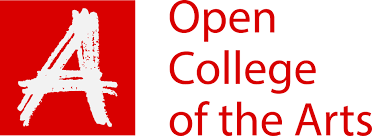Technological advances have provided us with digital images which have allowed us to manipulate them for honourable but some times dishonourable purposes. It should not be forgotten that photographs have been manipulated since they were invented. Dark room processing allowed contrasts to be adjusted using techniques such as dodging and burning. Composite images have been created throughout the life of photography to produce artistic works. However they have often been used to deceive.
In the case of the Tony Blair Selfie [1] a composite was used to portray a different version of the truth. A truth that Tony Blair would never admit to. The authors of the composite had used an image of Tony Blair taking a selfie in front of a group of military personnel. They then replaced the background with a burning oil field. The joy on Tony Blair’s face makes you immediately question the validity of the image. Although the result is satirical it has a serious point regarding illegal war and potential war crimes.
The discussion in the Liz Wells ‘Photography: A Critical Introduction’ [2] looks at the digital age and observes that the historical definition of the nature of photography has changed. Previously photography was regarded as a true record but now that is no longer true with the latest digital transformation technologies.
At this point I have to admit that I have struggled immensely with Photoshop and understanding the multitude of tools and functions available. I have started with something that I thought was simple but found that this was an art form in its own right and requires a lot of skill and patience. I have attached the following screenshot to show my use of mask and text layers to create a composite from 3 images.

The scene I have manipulated is the ‘Balloons and Laughter’ shop that has been the subject of my Witham housing development series. On my initial visit in 2016 I took the image in the late afternoon when the shop was closed and cones were placed at the entrances. On my visit in 2017 the shop was open and so no cones were placed outside.
My manipulated image attempts to show that I could make the shop appear closed by adding two cones and amending the sign to say ‘Closed’. I also added a suspicious aspect of placing someone inside the building as if they were inside without permission or maybe the shop not closed at all.
The results are sloppy and I will have to continue to put more work in to it to get it anywhere near convincing enough. However I have written it up for now as I need to progress with the course and assignment submission.
Before

After

Original (2016)

References
- www.theguardian.com/artanddesign/2013/oct/15/tony-blair-selfie-photo-opimperial-war-museum [accessed 12/09/17]
- Photography: A Critical Introduction, Wells, L, pp92-95, Fifth Edition





 If I walked in to a gallery and there was a room entitled
If I walked in to a gallery and there was a room entitled 




























































 I’m not sure the likes of
I’m not sure the likes of  I have researched William Eggleston in the EYV module –
I have researched William Eggleston in the EYV module – 






